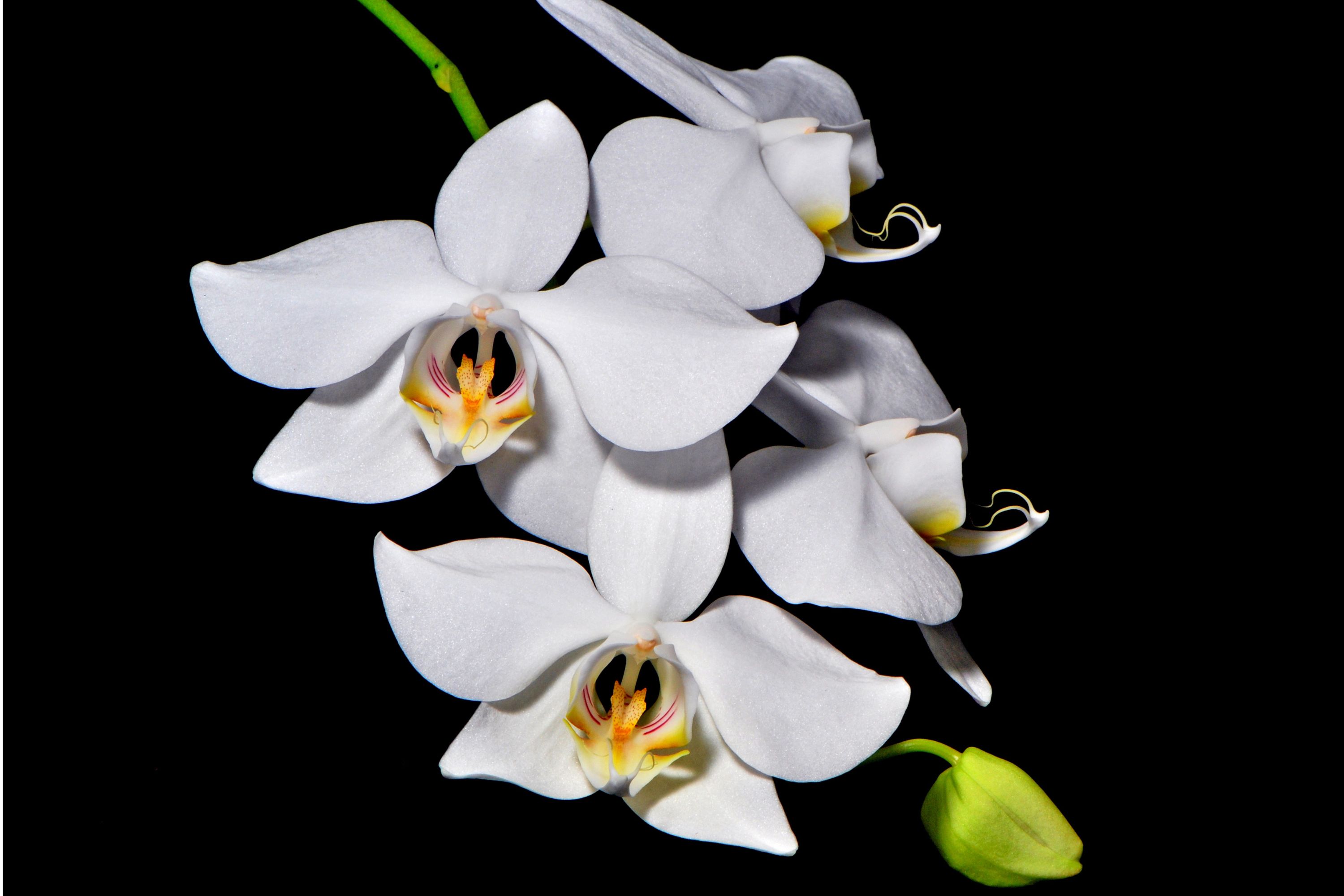Moon orchid
(Phalaenopsis amabilis)

Description
Phalaenopsis amabilis is a species of orchid native to Southeast Asia, specifically the countries of the Philippines, Borneo, and Sumatra. This orchid is commonly known as the moth orchid, and it is one of the most popular species of orchids in cultivation. It is known for its beautiful, long-lasting flowers and its ease of cultivation, making it a favorite among beginner and experienced orchid growers alike. Taxonomy and Etymology The scientific name of Phalaenopsis amabilis comes from the Greek words "phalaina" (meaning moth) and "opsis" (meaning appearance or likeness), referring to the moth-like appearance of the flowers. The species name "amabilis" comes from the Latin word for "lovely" or "beautiful," a fitting description for this stunning orchid. Phalaenopsis amabilis was first described by the Dutch botanist Johannes Burman in 1768. Since then, several varieties and hybrids of Phalaenopsis amabilis have been developed, with different flower colors and patterns. Appearance and Characteristics Phalaenopsis amabilis is a epiphytic orchid, meaning it grows on other plants, usually on the branches of trees in its native habitat. It has a monopodial growth habit, meaning that it grows from a single stem and produces leaves and flowers from the top of the stem. The leaves of Phalaenopsis amabilis are dark green, leathery, and elliptical in shape, growing up to 30 cm in length. The flowers of this orchid are its most striking feature, with large, showy blooms that can measure up to 15 cm in diameter. The flowers are typically white, with a yellow center and a pink or purple lip. Phalaenopsis amabilis flowers bloom in late winter or early spring, and the blooms can last for several weeks, making this orchid a popular choice for indoor and outdoor decoration during the winter months. The plant can grow up to 60 cm in height, and it can produce multiple flower spikes, each with several flowers. Cultivation and Care Phalaenopsis amabilis is a relatively easy orchid to grow and care for, making it a popular choice for beginner orchid growers. Here are some tips for successfully growing and caring for this orchid: Light: Phalaenopsis amabilis prefers bright, indirect light. Avoid placing the plant in direct sunlight, as this can burn the leaves and flowers. Temperature: This orchid prefers temperatures between 18-24°C during the day and slightly cooler temperatures at night. Watering: Water Phalaenopsis amabilis once a week, or when the potting mix is nearly dry. Avoid overwatering, as this can cause root rot. Humidity: This orchid prefers high humidity, between 50-70%. You can increase humidity by placing the plant on a tray of pebbles filled with water or by using a humidifier. Fertilizer: Feed Phalaenopsis amabilis with a balanced orchid fertilizer once a month during the growing season. Potting Mix: Use a well-draining orchid mix, such as bark or sphagnum moss. Propagation Phalaenopsis amabilis can be propagated through division, which involves separating the plant into two or more sections, each with its own set of roots and leaves. Here's how to propagate Phalaenopsis amabilis through division: Choose a healthy plant: Choose a healthy Phalaenopsis amabilis plant that has several healthy leaves and at least two mature pseudobulbs (thickened stems that store water and nutrients). Prepare the new pot: Choose a new pot that is slightly larger than the current pot and fill it with fresh orchid potting mix, such as bark or sphagnum moss. Remove the plant from the old pot: Carefully remove the plant from its current pot by gently pulling it out. Be careful not to damage the roots or pseudobulbs. Inspect the plant: Inspect the plant and identify areas where it can be divided. Look for areas where there are multiple pseudobulbs or where the plant has naturally separated into two or more sections. Divide the plant: Using a clean, sharp knife or pruning shears, carefully divide the plant into two or more sections. Each section should have at least two mature pseudobulbs and a healthy set of leaves and roots. Trim the roots: Trim any damaged or dead roots from each section using sterilized pruning shears. Repot the new sections: Place each new section into its own pot, making sure that the roots are spread out and covered with potting mix. Gently press the mix around the roots to secure the plant in the pot. Water the new plants: Water the new plants thoroughly, making sure that the potting mix is evenly moist. Allow the plants to drain before returning them to their growing area. Care for the new plants: Continue to care for the new plants as you would a mature Phalaenopsis amabilis, including providing the appropriate light, temperature, and humidity levels, as well as regular fertilization and watering. Propagation through division is typically done when the plant outgrows its current pot or when it becomes too large to handle. It's important to choose a healthy plant and be gentle when dividing it to avoid damaging the roots or pseudobulbs. With proper care, your new Phalaenopsis amabilis plants will thrive and produce beautiful blooms for years to come.
Taxonomic tree:







